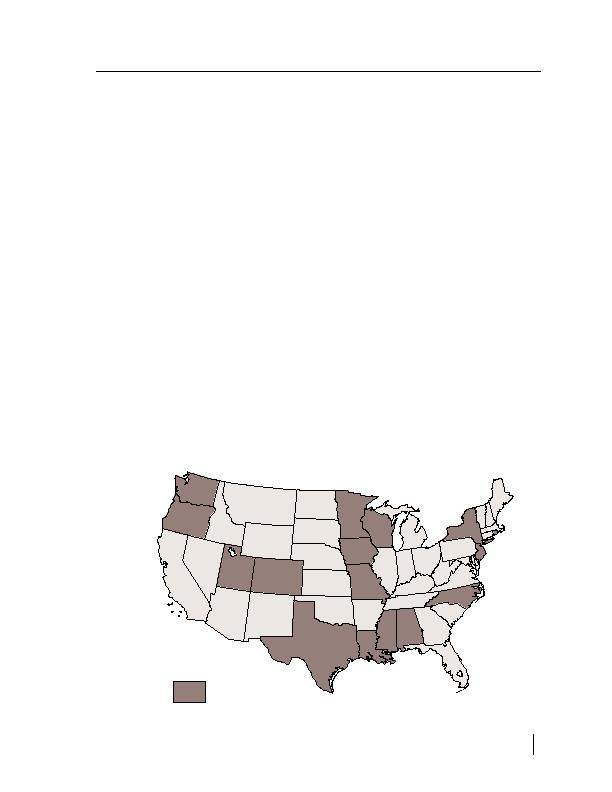
There were 24,359 events reported to the
the manufacture of asbestos-containing gas
HSEES during 19931997. Fixed-facility events
masks, develop mesothelioma. This disease may
represented 80% of all events, and transporta-
not show up until many years (generally 20
tion-related events represented 20%. The
40+) after asbestos exposure.
number of events reported increased every year,
partially due to improved reporting. The largest
Hazardous Substances
percentage of fixed-facility industry-related
Emergency Events Surveillance:
events involved releases from aboveground
storage areas and from a vessel used for pro-
Analysis of 5 Years of Data
cessing, piping, material loading and unloading
sites. The most frequent causal factors were
Since 1990, ATSDR has maintained an active,
equipment failure and operator error.
state-based Hazardous Substances Emergency
Events Surveillance (HSEES) system to de-
scribe the public health consequences associated
fixed-facility events was highest from April
with the release of hazardous substances. The
through August, with a peak occurring in May,
HSEES program collects data on the public
coinciding with the high demand for agricultural
health impact of hazardous substance releases
chemicals. Both fixed-facility and transporta-
and promotes the prevention of these impacts in
tion-related events occurred more frequently on
16 participating states (see Figure 1). In fiscal
week days than on weekends. The majority of
year 2000, an analysis was conducted looking at
fixed-facility events and transportation events
5 years of data from HSEES.
occurred between the hours of 6 AM and 6 PM,
peaking at 10 AM.
Figure 1. States participating in HSEES in FY 2000
HSEES states
chapter 3 43


 Previous Page
Previous Page
